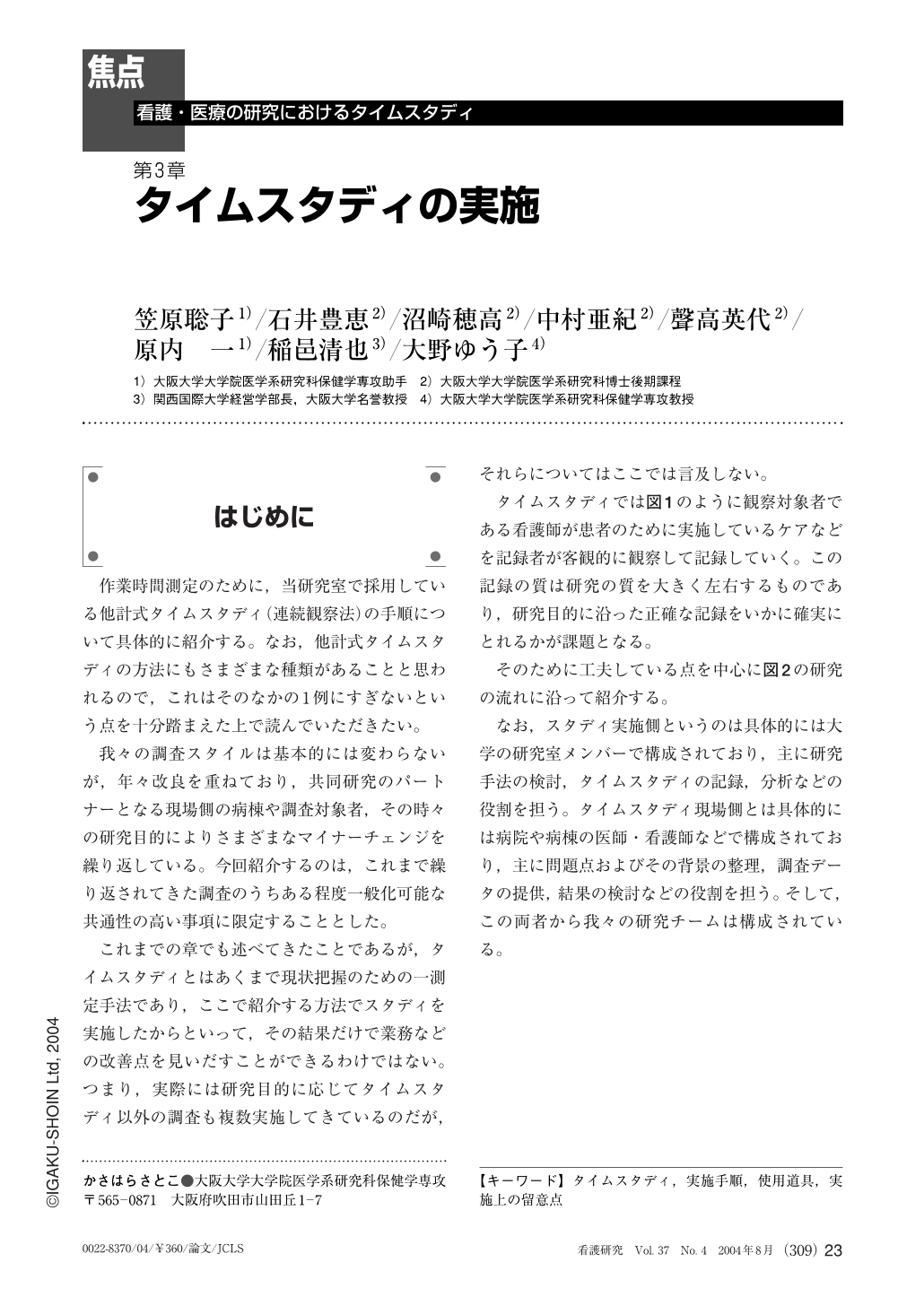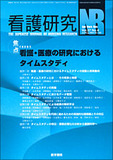Japanese
English
- 有料閲覧
- Abstract 文献概要
- 1ページ目 Look Inside
はじめに
作業時間測定のために,当研究室で採用している他計式タイムスタディ(連続観察法)の手順について具体的に紹介する。なお,他計式タイムスタディの方法にもさまざまな種類があることと思われるので,これはそのなかの1例にすぎないという点を十分踏まえた上で読んでいただきたい。
我々の調査スタイルは基本的には変わらないが,年々改良を重ねており,共同研究のパートナーとなる現場側の病棟や調査対象者,その時々の研究目的によりさまざまなマイナーチェンジを繰り返している。今回紹介するのは,これまで繰り返されてきた調査のうちある程度一般化可能な共通性の高い事項に限定することとした。
これまでの章でも述べてきたことであるが,タイムスタディとはあくまで現状把握のための一測定手法であり,ここで紹介する方法でスタディを実施したからといって,その結果だけで業務などの改善点を見いだすことができるわけではない。つまり,実際には研究目的に応じてタイムスタディ以外の調査も複数実施してきているのだが,それらについてはここでは言及しない。
タイムスタディでは図1のように観察対象者である看護師が患者のために実施しているケアなどを記録者が客観的に観察して記録していく。この記録の質は研究の質を大きく左右するものであり,研究目的に沿った正確な記録をいかに確実にとれるかが課題となる。
そのために工夫している点を中心に図2の研究の流れに沿って紹介する。
なお,スタディ実施側というのは具体的には大学の研究室メンバーで構成されており,主に研究手法の検討,タイムスタディの記録,分析などの役割を担う。タイムスタディ現場側とは具体的には病院や病棟の医師・看護師などで構成されており,主に問題点およびその背景の整理,調査データの提供,結果の検討などの役割を担う。そして,この両者から我々の研究チームは構成されている。
The most important points for the accurate data collection are : 1)how workers being observed are kept free of influence from the presence of the observers, which may bring about the ‘Hawthorne’ effect, 2)how to keep the consistency and uniformity of measurement and recording among observers, and 3)how to promote mutual understanding among members of the research team, enhance and maintain their motivation for investigation.
Though further considerations are required because of survey in a hospital, it is important that every researchers in university and hospital corporate with each other.
Our investigative approach does not change basically, but it has been improved year by year and repeated various minor changes depending on purpose of study.
In this chapter, we describe some of the general considerations for the success of time and motion study based on our experience. They include “specification of the purpose of study”, “clear understanding of the purpose of study among the research team”, “good understanding of the procedure”, “unit of measuring time”, “tools for measuring time”, “forms for recording”, “quality control of measurement and recording”, “selection of observers”, “observers' clothes”, “scheduling of the observers and the preparation of contact list”, “safety and health management for the observers”, “selection of the practitioners to be observed”, “preparatory collection of information and its documentation”, “ethical considerations for patients and practitioners to be observed”, “briefing at the end of the observation”, “analysis and discussion”, “continuity of the study” and “publication”.

Copyright © 2004, Igaku-Shoin Ltd. All rights reserved.


